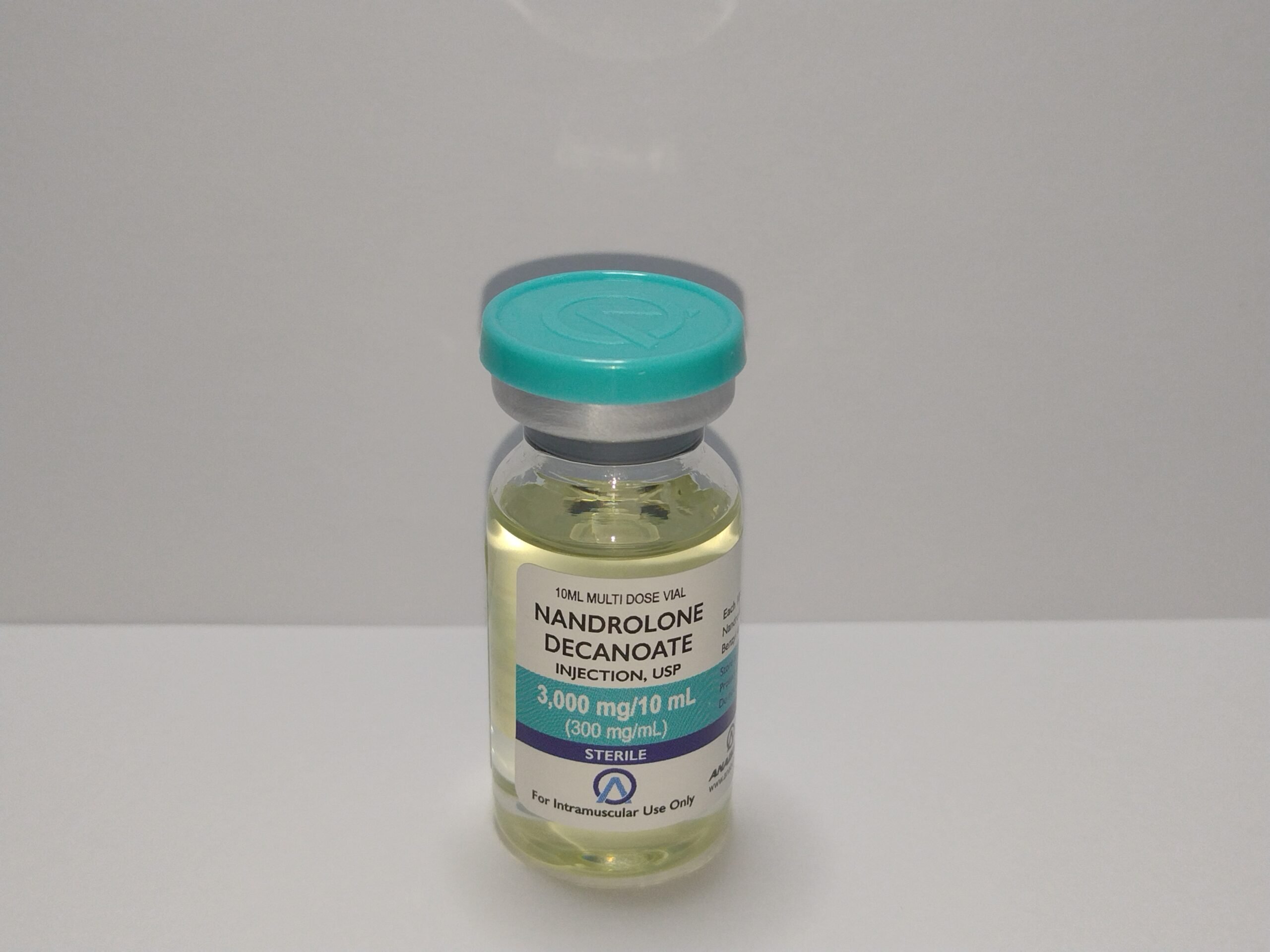
Dianabol profile
Metandienone, also known as methandienone or methandrostenolone, is sold under the brand name D-Bol, among others. It is an androgen and anabolic steroid (AAS) medication. It is still quite often used because of its affordability. It is also effective for bulking cycles. It is also used non-medically for physique- and performance-enhancing purposes. It is often taken by mouth; there is an injectable version as well.
Side effects of metandienone include symptoms of masculinisation, like acne, increased hair growth, voice changes, and increased sexual desire. The drug causes oestrogenic effects like fluid retention and breast enlargement. It can also lead to liver damage. The drug is an agonist of the androgen receptor (AR). It is the biological target of androgens like testosterone and dihydrotestosterone (DHT). The drug has strong anabolic effects and moderate androgenic effects.[1] It also has moderate oestrogenic effects.
Metandienone was originally developed in 1955 by CIBA and marketed in Germany and the United States. As the CIBA product Dianabol, metandienone quickly became the first widely used AAS among professional and amateur athletes. It remains the most common orally active AAS for non-medical use. It is currently a controlled substance in the United States and United Kingdom and remains popular among bodybuilders. Metandienone is readily available without a prescription in certain countries such as Mexico. It is also manufactured in some Asian countries.
Medical uses of Dianabol
Metandienone was formerly approved and marketed as a form of androgen replacement therapy for the treatment of hypogonadism in men. It has since been discontinued and withdrawn in most countries, including in the United States.
It was given at a dosage of 5 to 10 mg/day in men and 2.5 mg/day in women.
| Route | Medication | Major brand names | Form | Dosage |
|---|---|---|---|---|
| Oral | Testosterone | – | Tablet | 400–800 mg/day (in divided doses) |
| Testosterone undecanoate | Andriol, Jatenzo | Capsule | 40–80 mg/2–4x day (with meals) | |
| Methyltestosterone | Android, Metandren, Testred | Tablet | 10–50 mg/day | |
| Fluoxymesterone | Halotestin, Ora-Testryl, Ultandren | Tablet | 5–20 mg/day | |
| Metandienone | Dianabol | Tablet | 5–15 mg/day | |
| Mesterolone | Proviron | Tablet | 25–150 mg/day | |
| Sublingual | Testosterone | Testoral | Tablet | 5–10 mg 1–4x/day |
| Methyltestosterone | Metandren, Oreton Methyl | Tablet | 10–30 mg/day | |
| Buccal | Testosterone | Striant | Tablet | 30 mg 2x/day |
| Methyltestosterone | Metandren, Oreton Methyl | Tablet | 5–25 mg/day | |
| Transdermal | Testosterone | AndroGel, Testim, TestoGel | Gel | 25–125 mg/day |
| Androderm, AndroPatch, TestoPatch | Non-scrotal patch | 2.5–15 mg/day | ||
| Testoderm | Scrotal patch | 4–6 mg/day | ||
| Axiron | Axillary solution | 30–120 mg/day | ||
| Androstanolone (DHT) | Andractim | Gel | 100–250 mg/day | |
| Rectal | Testosterone | Rektandron, Testosterone | Suppository | 40 mg 2–3x/day |
| Injection (IMTooltip intramuscular injection or SCTooltip subcutaneous injection) | Testosterone | Andronaq, Sterotate, Virosterone | Aqueous suspension | 10–50 mg 2–3x/week |
| Testosterone propionate | Testoviron | Oil solution | 10–50 mg 2–3x/week | |
| Testosterone enanthate | Delatestryl | Oil solution | 50–250 mg 1x/1–4 weeks | |
| Xyosted | Auto-injector | 50–100 mg 1x/week | ||
| Testosterone cypionate | Depo-Testosterone | Oil solution | 50–250 mg 1x/1–4 weeks | |
| Testosterone isobutyrate | Agovirin Depot | Aqueous suspension | 50–100 mg 1x/1–2 weeks | |
| Testosterone phenylacetate | Perandren, Androject | Oil solution | 50–200 mg 1x/3–5 weeks | |
| Mixed testosterone esters | Sustanon 100, Sustanon 250 | Oil solution | 50–250 mg 1x/2–4 weeks | |
| Testosterone undecanoate | Aveed, Nebido | Oil solution | 750–1,000 mg 1x/10–14 weeks | |
| Testosterone buciclate | – | Aqueous suspension | 600–1,000 mg 1x/12–20 weeks | |
| Implant | Testosterone | Testopel | Pellet | 150–1,200 mg/3–6 months |
| Notes: Men produce about 3 to 11 mg of testosterone per day (mean 7 mg/day in young men). Footnotes: a = Never marketed. b = No longer used and/or no longer marketed. Sources: See template. | ||||
Available forms of Dianabol
Metandienone was provided in the form of 2.5, 5, and 10 mg oral tablets.
Non-medical uses
Metandienone is used for physique- and performance-enhancing purposes by competitive athletes, bodybuilders, and powerlifters. It is said to be the most widely used AAS for such purposes both today and historically.
Side effects
Androgenic side effects such as oily skin, acne, seborrhoea, increased facial/body hair growth, scalp hair loss, and virilisation may occur.[1] Oestrogenic side effects such as gynaecomastia and fluid retention can also occur.[1] Case reports of gynaecomastia exist.[21][22] As with other 17α-alkylated steroids, methandienone poses a risk of hepatotoxicity. Use over extended periods of time can result in liver damage without appropriate precautions.[1]
Pharmacology
Pharmacodynamics
| Medication | Ratios |
|---|---|
| Testosterone | ~1:1 |
| Androstanolone (DHT) | ~1:1 |
| Methyltestosterone | ~1:1 |
| Methandriol | ~1:1 |
| Fluoxymesterone | 1:1–1:15 |
| Metandienone | 1:1–1:8 |
| Drostanolone | 1:3–1:4 |
| Metenolone | 1:2–1:30 |
| Oxymetholone | 1:2–1:9 |
| Oxandrolone | 1:3–1:13 |
| Stanozolol | 1:1–1:30 |
| Nandrolone | 1:3–1:16 |
| Ethylestrenol | 1:2–1:19 |
| Norethandrolone | 1:1–1:20 |
| Notes: In rodents. Footnotes: a = Ratio of androgenic to anabolic activity. Sources: See template. | |
Methandienone binds to and activates the androgen receptor (AR) to exert its effects. These include dramatic increases in protein synthesis, glycogenolysis, and muscle strength over a short space of time. While the drug can be metabolised by 5α-reductase into methyl-1-testosterone (17α-methyl-δ-DHT), it has an1 extremely low affinity for this enzyme. Methyl-1-testosterone is thus produced in only trace amounts. As such, 5α-reductase inhibitors like finasteride and dutasteride do not reduce the androgenic effects of metandienone. The ratio of the anabolic to androgenic activity of metandienone is improved relative to that of testosterone. However, the drug does still possess moderate androgenic activity. The ratio of the anabolic to androgenic activity of metandienone is improved relative to that of testosterone. However, the drug does still possess moderate androgenic activity. It is capable of causing severe virilisation in women and children. As such, it is only really commonly used in men.
Metandienone can be changed into the hormone methylestradiol by the body. The rate of aromatisation is reduced relative to that for testosterone or methyltestosterone. However, the oestrogen it produces is metabolically resistant. Metandienone therefore continues to have a moderate oestrogenic effect. As such, it can cause side effects such as gynaecomastia and fluid retention. Antiestrogens are coadministered to reduce oestrogenic side effects. These include aromatase inhibitors such as anastrozole or selective oestrogen receptor modulators such as tamoxifen. Metandienone has no progestogenic activity.
As with other 17α-alkylated AAS, metandienone may be hepatotoxic, especially with prolonged use of high doses.
Pharmacokinetics
Metandienone has high oral bioavailability. It has very low affinity for human serum sex hormone-binding globulin (SHBG). Its bioavailability is approximately 10% less than that of testosterone. The affinity for DHT is only 2% of that of testosterone. The drug is metabolised in the liver by 6β-hydroxylation, 3α- and 3β-oxidation, 5β-reduction, 17β-epimerization, and conjugation, among other reactions. Unlike methyltestosterone, metandienone does not create 5α-reduced metabolites because it has a double bond at C1(2). The elimination half-life of metandienone is about 3–6 hours. It is eliminated in the urine.
Chemistry
See also: List of androgens/anabolic steroids
Metandienone, which is also called 17α-methyl-δ-testosterone or 17α-methylandrost-1,4-dien-17β-ol-3-one, is a man-made steroid that is a modified version of testosterone with a methyl group added at the C17α position and an extra double bond between the C1 and C2 positions. 1 It is a modification of testosterone with a methyl group at the C17α position. It also has an additional double bond between the C1 and C2 positions. The drug is also the 17α-methylated derivative of boldenone (δ1-testosterone) and the δ1 analogue of methyltestosterone (17α-methyltestosterone).
Detection in body fluids
Metandienone is subject to extensive hepatic biotransformation by various enzymatic pathways. The primary urinary metabolites are detectable for up to 3 days. A recently discovered hydroxymethyl metabolite is found in urine for up to 19 days. This reaction occurs after a single 5 mg oral dose. Several of the metabolites are unique to metandienone. Methods for detection in urine specimens usually involve gas chromatography-mass spectrometry.
History
Metandienone was first described in 1955. It was synthesised by researchers at the CIBA laboratories in Basel, Switzerland. CIBA filed for a U.S. patent in 1957 and began marketing the drug as Dianabol in 1958 in the U.S. It was initially prescribed to burn victims and the elderly. It was also prescribed off-label as a pharmaceutical performance enhancement to weightlifters and other athletes. Early adopters included players for Oklahoma University. Sid Gillman, the head coach of the San Diego Chargers, administered the drug to his team starting in 1963.
The U.S. FDA initiated the DESI review process after passing the Kefauver-Harris Amendment in 1962. This was to ensure the safety and efficacy of drugs approved under the more lenient pre-1962 standards. These drugs included Dianabol. In 1965, the FDA pressured CIBA to further document its legitimate medical uses. The FDA then re-approved the drug for treating postmenopausal osteoporosis and pituitary-deficient dwarfism. After CIBA’s patent exclusivity period lapsed, other manufacturers began to market generic metandienone in the U.S.
Following further FDA pressure, CIBA withdrew Dianabol from the U.S. market in 1983. Generic production shut down two years later, when the FDA revoked metandienone’s approval entirely in 1985. Non-medical use was outlawed in the U.S. under the Anabolic Steroids Control Act of 1990. While metandienone is controlled and no longer medically available in the U.S., it continues to be produced and used medically in some other countries.
Society and culture

Generic names
Metandienone is the generic name of the drug. It is its INN, International Nonproprietary Name. Methandienone is its BAN (British Approved Name) tooltip. Métandiénone is its DCF Tooltip Dénomination Commune Française. It is also referred to as methandrostenolone and as dehydromethyltestosterone. The former synonym should not be confused with methylandrostenolone. It is another name for a different AAS known as metenolone.
Brand names
Metandienone was introduced and formerly sold primarily under the brand name Dianabol. It has been marketed under various other brand names. These include Anabol, Averbol, Chinlipan, Danabol, Dronabol, Metanabol, Methandon, Naposim, Reforvit-B, and Vetanabol, among others.
Legal status
Metandienone, along with other AAS, is a schedule III controlled substance in the United States under the Controlled Substances Act.





